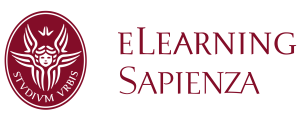Syllabus
syllabus
CHEMISTRY AND INTRODUCTION TO BIOCHEMISTRY
Core Curriculum
General learning aims:
Knowledge of basic chemistry and of biochemical structures: glucides, proteins, lipids. At the end of the course, the students should: i) know the chemical bases of pathophysiological processes, ii) address in molecular terms some simple biomedical aspects, iii) be aware of the importance of the chemical instruments in the cultural formation of a medical doctor.
Formal Teaching (subjects)
General and inorganic chemistry:
The matter: atomic and molecular orbitals; chemical bonds, strong and weak interactions, states of matter.
The behaviour of Gases: ideal gas laws, solubility of gases in liquids
Solutions: definition & properties; concentration; vapour pressure; electrolytes; dissociation equilibrium; colligative properties; osmosis.
Redox reactions: defining oxidation and reduction, biological relevance
Thermodynamics: the T. Parameters enthalpy, entropy, free energy and temperature. Equilibrium and T.
Chemical reactions: equilibrium and kinetics; the mass action low and the equilibrium constant.
Water solutions: acids, bases strength and pH; buffers, the interaction of salts with water.
Bio-organic Chemistry:
The biomolecules: classification, shape and conformation
Hydrocarbon compounds: nomenclature, classification, properties.
Functional groups: the carbonyl group, aldehides and ketons; the carboxylic group, the alcoholic hydroxyl- , the amino- and the sulphydril- group; ethers and esters.
Glucides or saccharides: nomenclature and classification. Structure and properties of mono-, di- and polysaccharides.
Aminoacids: nomenclature and classification. Structure, properties and ionization equilibria.
Proteins: primary, secondary, tertiary and quaternary structure; denaturation and folding.
Lipids: nomenclature and classification. Fatty acids, mono- di- tri-glycerides; basic structure of phospholipids and bio-membranes. Cholesterol
Nucleic Acids: purines and pyrimidines, the nucleosides and nucleotides composition; keto-enolic tautomerism and hydrogen bonds.
Calculus (subjects):
Gas, Acqueous solutions, Colligative properties, Equilibrium properties, pH, Buffers, Hydrolysis.
Suggested textbooks:
- Chemistry for the Biosciences: The Essential concepts
Au: T. Bradshow & J. Crowe
Oxford University Press
- “Introduction to General, Organic and Biochemistry”
Bettelheim, Brown, Campbell, Farrell.
Brooks & Cole Eds.

